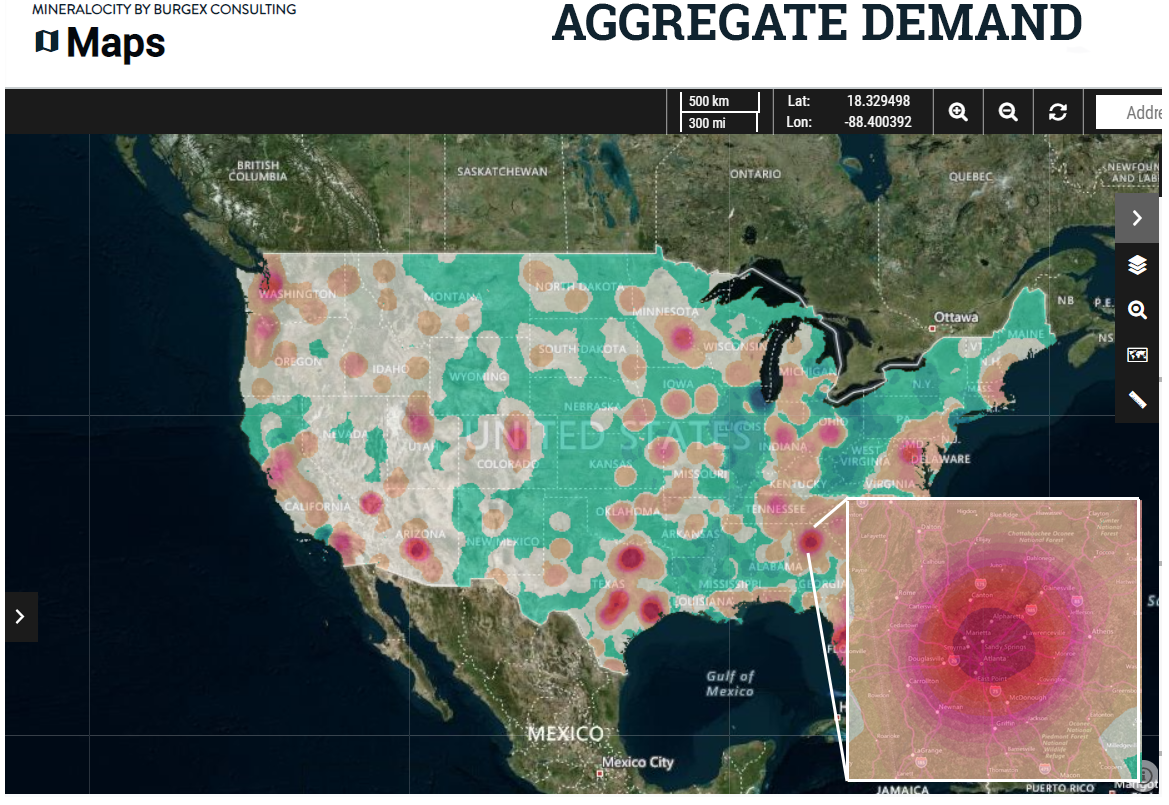I’ll be candid – I’ve written a lot about Mineralocity Aggregates over the last six months, but I recently found out from an industry colleague that much of what I’ve written is overly technical or doesn’t adequately explain WHAT Mineralocity Aggregates is and how it can be used by those in and around the aggregate industry. This article is my attempt to rectify that, here we go!
All Commercial Aggregate Producers Mapped – Throughout the Entire United States

Mineralocity Aggregates has all 7,000+ commercial construction aggregates (sand, gravel, crushed stone) producers mapped out. This information is useful for those who are looking to source coarse or fine aggregate materials (construction contractors), those who are evaluating different markets to expand and start production of construction aggregates (active and potential producers), and others.
Some examples of how these mapped aggregate producers could be used are:
- Locating sources for fine or coarse aggregate materials near a construction site
- Identifying areas where there is a lack of current aggregate production
- Identifying potential customers for suppliers to the aggregate industry – from explosives to tires and even consulting services
Aggregate Demand Estimated and Mapped

Mineralocity Aggregates contains a very accurate proprietary population model that is used to estimate construction aggregates demand – locally, regionally, and nationwide. This demand can be visualized and explored in a variety of ways within the platform. This is especially useful for current and potential producers who are looking to scale existing or start new operations. This data is also useful for aggregate industry associations, government entities, and others who are seeking to better understand the flow of construction materials.
Some examples of how aggregate demand can be used:
- Locating areas with good potential for starting a new pit or quarry
- Optimizing existing operations to explore new portions of the local market
- Evaluating long term local and regional planning needs
